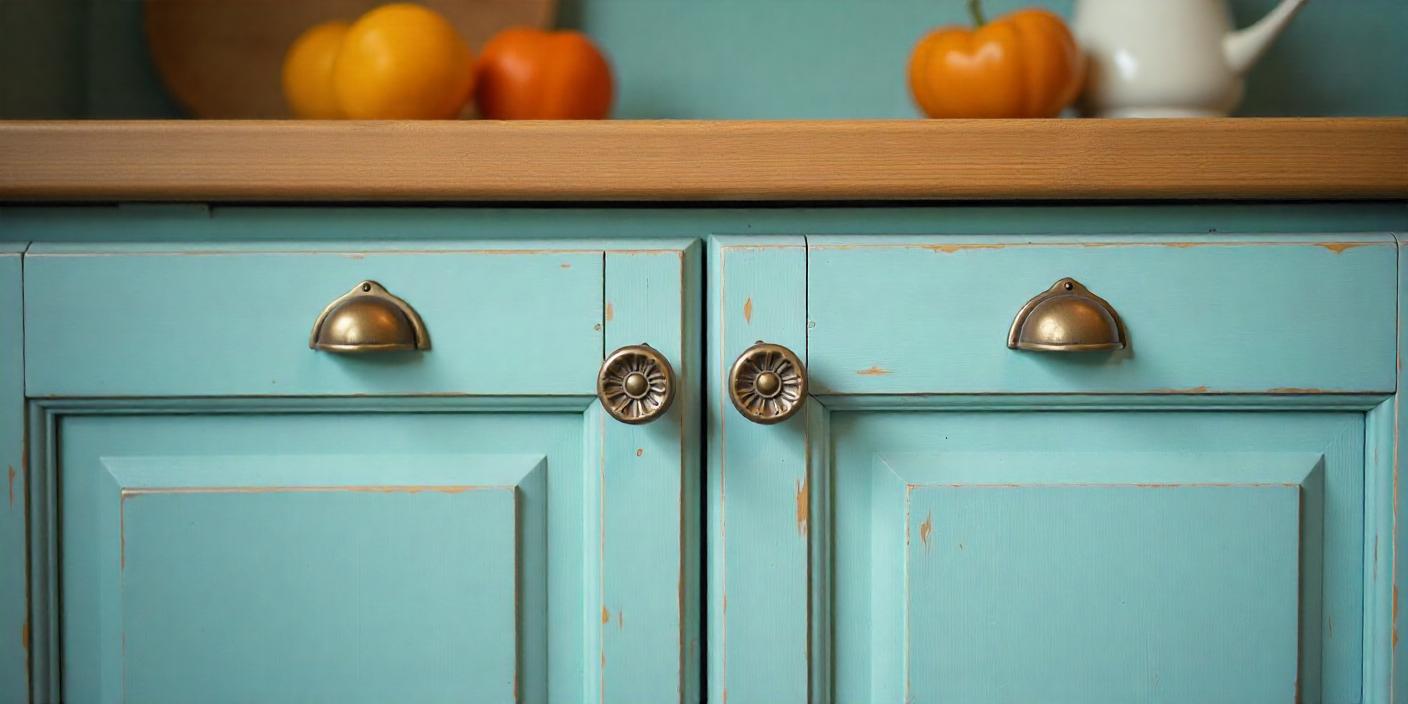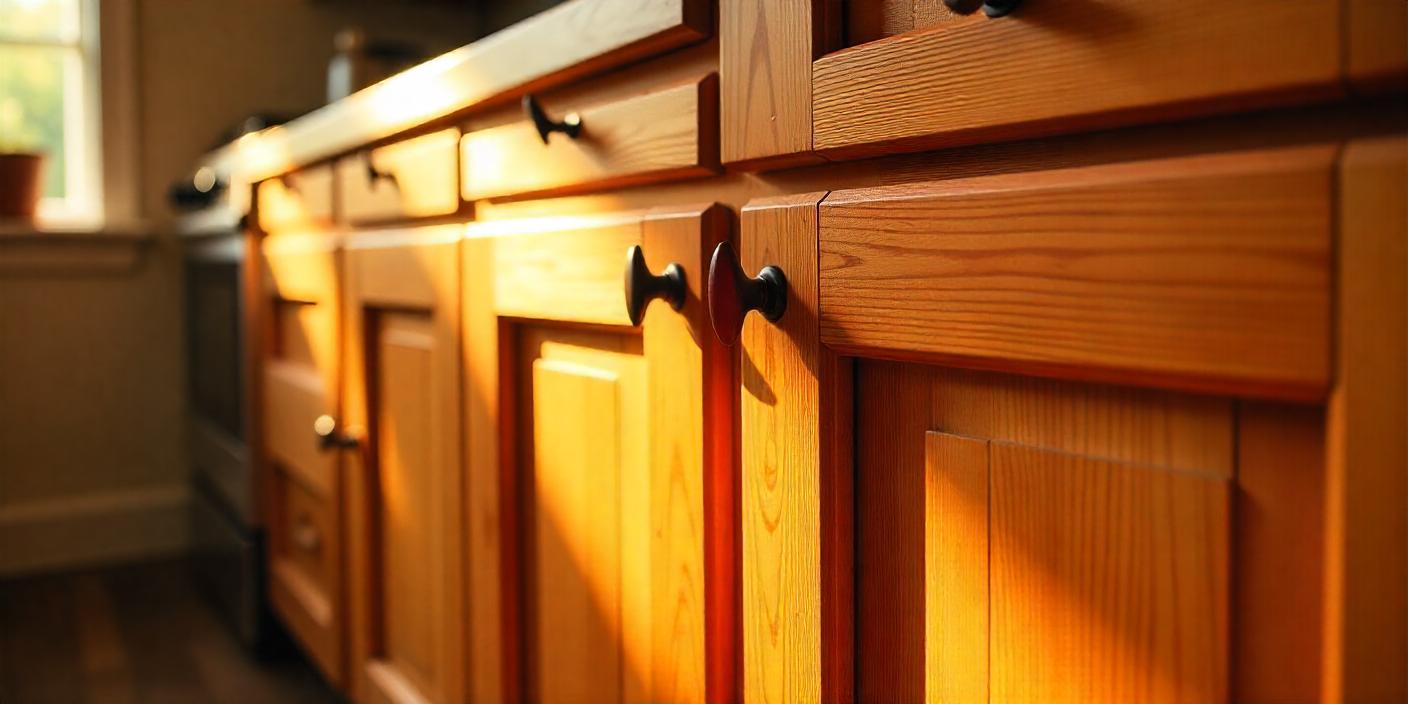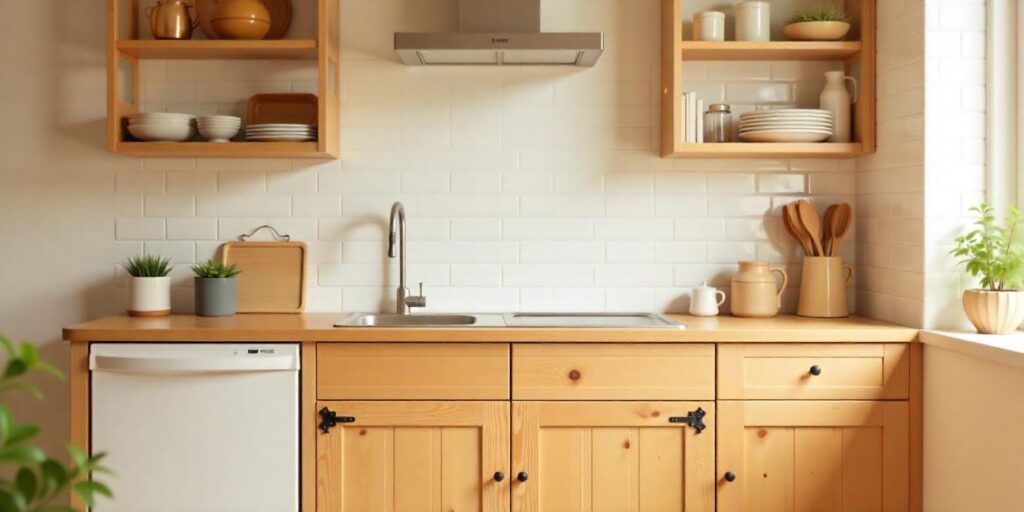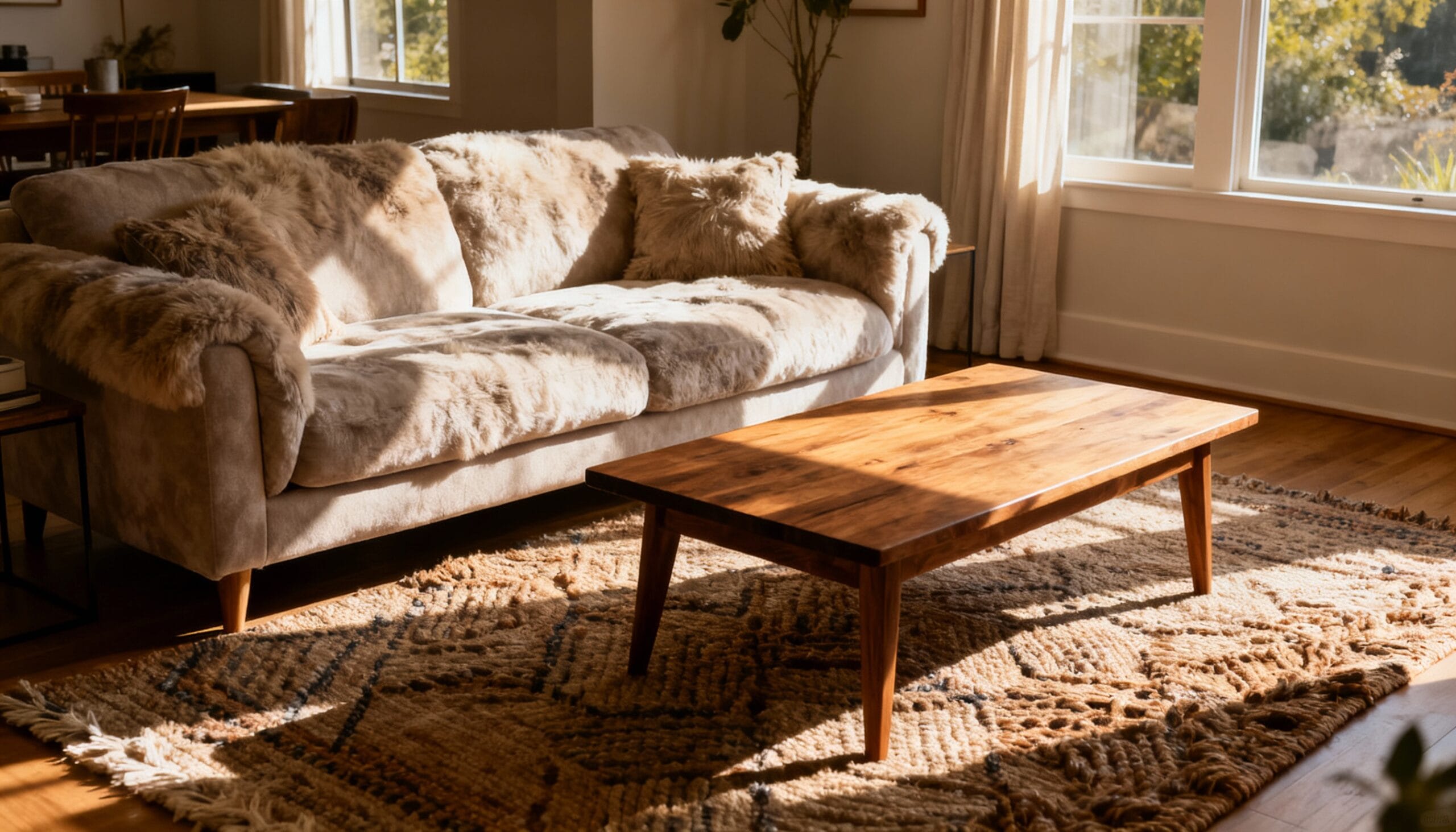Kitchen cabinet door SOS is a way for home owners to notice signs that it is time to do a replacement as soon as possible. There are many signs home owners should be aware of when it comes to their kitchen cabinet doors. Listed below are some signs to keep an eye on.
Kitchen Cabinet Door SOS 1: Warping Or Cracking
One of the most obvious and revealing indications that your kitchen cabinet doors need replacing is warping or splitting. Exposure to heat, humidity, and water — all of which are found in every kitchen over time can seriously damage wood and other cabinet door materials. Alignment problems result from cabinet doors losing their initial form as they begin to warp.
You may find gaps when closed, uneven appearance, or doors that do not close correctly. On the other hand, cracking usually starts lightly but gets worse with age and use, especially in solid wood cupboards subjected to temperature changes. These cracks could become a hygiene issue as they house dust, oil, and germs in addition to ruining your kitchen's aesthetic attractiveness.
Though little problems might be momentarily hidden with filler or touch-up paint, structural damage from warping or cracking usually cannot be fixed. Many times, these problems indicate underlying moisture-related problems within the cabinetry that might eventually impact the interior storage area as well. If your cabinets display these symptoms, it’s not just a visual problem but also a functional one that might influence your daily culinary experience.
High-quality, moisture-resistant materials can immediately refresh your kitchen's appearance, increase usefulness, and lengthen the general lifespan of your cabinets by replacing the broken cabinet doors. Waiting until doors fall off their hinges warping and cracking are obvious SOS indications you must not disregard.
Kitchen Cabinet Door SOS 2: Peeling Or Chipped Finishes

Peeling or damaged finishes are among the most obvious and annoying indicators that your kitchen cabinet doors need replacing. Whether your cupboards are painted, laminated, or veneered, a decaying surface can give even the neatest kitchen the impression of neglect.
Daily wear and tear, exposure to heat and moisture, or incorrect cleaning supplies can all progressively deteriorate the surface of your cupboard doors over time. You could see the paint bubbling, corners folding, or areas entirely peeling; these are all evident signs that the coating has deteriorated too far gone to mend. Though a new coat of paint appears to be a fast solution, on already degraded surfaces it seldom lasts long.
@ampquartzcabinets Terima kasih kerana memlilih AmpQuartz! Korang yang nak buat kabinet rumah boleh cari kira jugak tau! 🤩 📞 𝐂𝐨𝐧𝐭𝐚𝐜𝐭 𝐔𝐬 📲 +6017 732 0149 (Jasmine) 📍𝐎𝐮𝐫 𝐒𝐡𝐨𝐰𝐫𝐨𝐨𝐦: 82, Jalan Gaya 1, Taman Gaya, Ulu Tiram, 81800 Johor Bahru #AmpQuartz #JohorBahru #UluTiram #KitchenCabinet #Aluminium #SolidPlywood #feedbackcustomer #fyp #fypppp #fyppage
♬ original sound – AmpQuartz – AmpQuartz
Peeling is in many cases a sign of more serious water damage or structural problems, notably with MDF or laminate materials. Constantly retouching flaws or covering chips means you are putting time and effort into a temporary fix. Particularly if you are thinking about selling your house, chipped finishes aesthetically age your kitchen and lower its worth. Changing the cabinet doors gives an opportunity to update your surroundings with current styles, colours, and finishes in addition to restoring its aesthetic appeal.
Thanks to a great variety of materials and alternatives on the market today, replacement might be both inexpensive and life-changing. It's time to wave farewell to patchwork fixes and embrace a clean, polished style if peeling and chipping have become the standard in your kitchen.
Kitchen Cabinet Door SOS 3: Loose Hinges Or Misaligned Doors
Loose hinges and doors that are not aligned are among the most frequent and aggravating indications indicating it's time to replace your kitchen cabinet doors. At first, it might sound like a little bother—a door that doesn't close correctly or hangs slightly lower than the others.
Over time, however, these problems usually grow and can greatly compromise your kitchen's appearance as well as its usability. Typically caused by wear and tear or repeated usage, loose hinges indicate the screws are not holding the wood correctly. This can cause doors to sag and not fully shut, therefore exposing holes and compromising the cabinet's overall structural integrity.
Although quick fixes like tightening screws or adding fillers can provide some relief, they hardly last. Misaligned doors not only mar the visual beauty of your kitchen but can also cause accelerated wear on the cabinet frames as they are forced to close wrongly. Should you find yourself continually fixing doors, hearing creaks, or seeing the doors grazing on neighbouring surfaces, it’s possibly an indicator that the cupboard doors and maybe the boxes are not structurally sound anymore.
Changing the doors with new, well fitted ones can bring back usability, boost decor, and even increase the general value of your kitchen area. It’s time to think about a complete cabinet door replacement when functionality suffers and fast fixes cease working.
Kitchen Cabinet Door SOS 4: Outdated Style That Dates Your Kitchen

Their antiquated design is among the most obvious indicators your kitchen cabinet doors have to be changed. Old cabinet doors with outdated designs, hardware, or finishes can immediately lower the visual appeal of the room even if the rest of your kitchen is kept in good condition.
For instance, opulent wood carvings from the 1980s, glossy laminates from the 1990s, or worn-out white thermofoil doors may no longer fit current simple, minimalistic patterns. These out-of-date aesthetics not only tire your kitchen and make it uninspired but can also impact the resale value of your house. Prospective buyers sometimes assess a kitchen by its cabinets; if the doors shriek “past era,” they might believe the whole kitchen needs renovations.
Moreover, outdated cabinet designs hardly fit in with contemporary appliances, lighting, or counters, producing a mismatched and aesthetically unpleasant setting. Changing your cabinet doors with a new, contemporary design—flat-panel, shaker-style, or slab doors—can immediately lift the whole space without a major remodel. Options in matte finishes, wood veneers, and current colours allow you to completely transform the appearance of your kitchen while sticking within your means.
Your cabinet doors may be holding your space back if you see yourself hiding your kitchen in pictures, avoiding hosting visitors, or wishing it resembled those in magazines. Bringing your kitchen up to date and increasing your house's general attractiveness may be much helped by a simple style refresh.
Kitchen Cabinet Door SOS 5: Persistent Odours Or Mould
The existence of continuous odours or visible mould is among the most startling and offensive indications that it's time to replace your kitchen cabinet doors. A musty, moist odour around your cabinet indicates that moisture has permeated the cabinet structure, a major warning flag even after a thorough cleaning.
Particularly cabinet doors manufactured of MDF or particleboard are very vulnerable to water damage. Once moisture infiltrates, it provides the ideal breeding ground for mould and mildew, which not only change the appearance and vibe of your kitchen but also carry significant health risks, particularly for those with allergies or respiratory sensitivities. Many times, the harm is more than just on the surface.
Mould can hide behind or within the cabinet doors, so replacement is required to completely remove it. Furthermore warping, swelling, and finally decomposition of the substance can result from ongoing exposure to moisture. Although simply masking the odour or cleaning the surface might provide a short-term solution, the underlying problem will remain and get worse over time.
Changing the damaged cabinet doors not only gets rid of the smell and mould but also helps to stop more contamination of your kitchen surroundings. To keep future moisture problems at bay, upgrade to water-resistant materials and enhance kitchen ventilation for a long-term solution. It’s time to quit patching and start fresh with new, more natural cabinet doors if mould or smell develops into a persistent problem.





